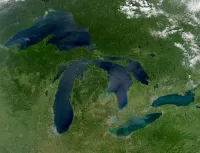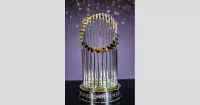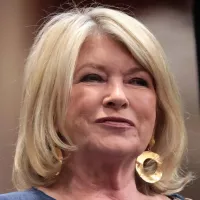The Little League World Series, held annually in South Williamsport, Pennsylvania every August, is a renowned baseball tournament for children aged 10-12. Established in 1947 as the National Little League Tournament, it was renamed after Major League Baseball's World Series. Games take place at Howard J. Lamade Stadium and Volunteer Stadium within the Little League headquarters complex.
1947: Little League Establishes Initial Age Limit
In 1947, Little League set the initial age limit for players, requiring them to turn 13 on or after August 1 of that year to participate.
1956: Predominantly U.S.-Based Teams
From its inception to 1956, the Little League World Series primarily featured U.S.-based teams, usually eight, competing in a single-elimination format.
1957: Introduction of Regions
The Little League World Series introduced regions in 1957, marking a significant change in the tournament structure.
1958: International Regions Added
The Little League World Series expanded to include international regions.
1959: Games at Howard J. Lamade Stadium
Howard J. Lamade Stadium began hosting Little League World Series games.
1962: Eight-Team Format with U.S. and International Regions
From 1962 to 2000, the Little League World Series adopted a format with eight teams, four from the U.S. and four from international regions.
1963: First Little League World Series Broadcast on Television
In a landmark moment for the sport, the first-ever television broadcast of the Little League World Series took place in 1963 on ABC Sports, marking the beginning of a long-standing tradition.
1969: Taiwanese Dominance Begins
Taiwan began a period of dominance in the Little League World Series in 1969, winning 15 out of the 23 tournaments until 1991.
1975: All-U.S. Tournament
Only teams from U.S. regions participated in the Little League World Series.
1976: Two-Bracket System Implemented
The Little League World Series introduced a two-bracket system, separating U.S. and international teams, with the winners competing in the championship.
1991: End of Taiwanese Dominance
Taiwan's dominance in the Little League World Series ended in 1991, marking the end of an era where they won 15 out of 23 tournaments.
1992: Lights Added to Lamade Stadium
Lights were installed at Howard J. Lamade Stadium.
2000: End of Eight-Team Format
The Little League World Series discontinued the format with eight teams - four from the U.S. and four from international regions - that had been in place since 1962.
2001: Little League Volunteer Stadium Opens
Little League Volunteer Stadium opened, coinciding with the expansion to 16 teams.
2001: Expansion to Sixteen Regions and Pool Play
The Little League World Series expanded to 16 regions and introduced a pool play format.
August 31, 2005: Little League Age Limit Change Impacts Players Born After May 1
On August 31, 2005, a significant change to Little League's age determination date went into effect, impacting players born between May 1 and August 31. This change, aimed at ensuring fairness and preventing older players from dominating, sparked controversy among some parents.
2006: Increased Television Coverage of Little League World Series
By 2006, the Little League World Series saw a substantial increase in television coverage, with 28 out of 36 games broadcasted on ABC, ESPN, and ESPN2. This expansion also included coverage of regional tournament games leading up to the LLWS, highlighting the growing popularity of youth baseball.
2006: Little League Loosens Age Limit
In 2006, Little League loosened its age limit, allowing players who turn 13 after April 30 to participate. This change resulted in many players already being 13 before the start of the Series in August.
2006: Rain Delays Final ABC Sports Broadcast of Little League World Series
In 2006, the world championship game was initially slated to be the final broadcast on ABC Sports. However, a rain delay forced the game to be postponed and ultimately aired on ESPN2, marking the end of an era for ABC's coverage of the event.
2006: Fence Distance Increased
The distance from home plate to the outfield fences at both stadiums was increased to 68.6 meters (225 feet).
January 2007: ESPN Extends Contract with Little League, Plans Full Coverage
In January 2007, ESPN solidified its commitment to broadcasting the Little League World Series by extending its contract with the organization through 2014. The agreement included plans to televise every game of the LLWS for the first time, with most games live on ESPN, ESPN2, or ABC, and the remaining games available online.
2010: Japanese Teams Rise to Prominence
Teams from Japan started to dominate the Little League World Series in 2010, winning five times by 2017.
2010: Double-Elimination Format and Consolation Games
The Little League World Series implemented a double-elimination bracket within pools and introduced consolation games.
June 2011: ESPN to Broadcast Little League World Series Games in 3D
In a bid to enhance viewer experience, ESPN announced in June 2011 that it would add 17 games from the Little League World Series to its ESPN 3D schedule, showcasing the tournament's exciting moments with cutting-edge technology.
2011: Elimination of Pools and Continued Double-Elimination
The Little League World Series removed the pool play system but retained the double-elimination format until the championship games.
2013: Little League World Series Realignment
The Little League World Series underwent a realignment in 2013.
2014: ESPN's Contract with Little League to Expire
ESPN's contract with Little League, which began in 2007, was set to expire in 2014.
2014: Little League Changes Age Cutoff, Sparks Outrage
In 2014, Little League voted to change the age cutoff from April 30 to December 31. This decision faced backlash from parents as it meant players born between May 1 and August 31, 2005, would lose a year of eligibility, despite not yet reaching their 13th birthdays.
November 2015: Little League Implements Grandfather Clause for Age Limit Change
In November 2015, Little League established a "grandfather" clause to address the concerns arising from the 2014 age cutoff change. This clause allowed players born between May 1 and August 31, 2005, to maintain their eligibility as 12-year-olds for the 2018 season, using the previous April 30 age determination date.
2017: Little League Discontinues Big League Divisions
In 2017, Little League made the difficult decision to discontinue its Big League divisions due to a decline in participation over the previous 15 years. However, the organization continued to support its other divisions, with seven of the remaining eleven adopting their own World Series formats, including three in girls' softball.
2017: End of Japanese Dominance
Japanese teams concluded their dominant run in the Little League World Series in 2017, having won five championships since 2010.
2018: Increased Coverage of Qualifying Games on ESPN+
By 2018, the coverage of Little League World Series qualifying games expanded significantly in the United States. Most regional group games became available online through ESPN+, with the final three games of each regional tournament broadcast on an ESPN network. This increase in coverage highlighted the growing interest in youth baseball.
2018: Grandfather Clause Implemented for 2018 Season
The grandfather clause, established in 2015, came into effect during the 2018 season, allowing players born between May 1 and August 31, 2005, to participate as 12-year-olds using the April 30 age determination date.
2018: Joint Dakota Representation Ends
Until 2018, North Dakota and South Dakota shared a single district in the Little League World Series.
August 2019: Tournament Expansion Announced
Organizers announced plans to expand the Little League World Series to 20 teams in 2021.
2019: New Age Determination Date Implemented, Banning 13-Year-Olds
Beginning in 2019, Little League implemented a new age determination date of August 31, effectively banning 13-year-old players from participating in the Series.
2019: Individual Dakota Representation Begins
Starting in 2019, North Dakota and South Dakota began sending separate teams to the Little League World Series.
2021: Expansion Delayed
The planned expansion of the Little League World Series was postponed to 2022.
2022: Expansion to Ten Regional Tournament Winners
Starting in 2022, the Little League World Series expanded to include ten regional tournament winners in the United States bracket.
2022: Odd Number of Teams in Great Lakes Regional
The Great Lakes Regional of the Little League World Series started having an odd number of teams in 2022.
2022: Tournament Expands and Crossover Games Eliminated
The Little League World Series expanded to 20 teams, and crossover consolation games were removed.
2022: New Regional Representation
The Little League World Series implemented a new regional representation format in 2022.
2022: Little League World Series Realignment
The Little League World Series underwent a realignment in 2022.
2024: 23 Girls Participate in Little League Baseball World Series
As of the 2024 tournament, a total of 23 girls have made history by participating in the Little League Baseball World Series.
2025: Fox Sports Secures Broadcasting Rights for Little League World Series
In a major broadcasting deal, Fox Sports secured the rights to cover the Little League World Series starting in 2025. This seven-year agreement marks a shift in the media landscape for the tournament.
Mentioned in this timeline
Japan is an East Asian island country situated in the...

The Great Lakes are a chain of five large interconnected...
Taiwan officially the Republic of China ROC is a country...

Sport encompasses physical activities and games frequently competitive and structured...

The World Series is Major League Baseball's championship series held...
Trending

1 month ago Martha Stewart's Holiday Collection Returns for 2025: Decor and Dining Favorites!

6 months ago Adou Thiero: From Arkansas Project to NBA Draft Prospect in 2025

1 month ago Jason Bateman's Sister Justine; Amy Poehler's SNL Chimpanzee Scare Detailed.
7 months ago Savannah Guthrie and Craig Melvin Temporarily Replaced on Today Show: Here's Why
26 days ago SeaWorld and Busch Gardens Face DOJ Probe Over Walker Ban Policy.
22 days ago Marcus Freeman: Notre Dame coach considered for Giants head coaching vacancy in NFL.
Popular

XXXTentacion born Jahseh Dwayne Ricardo Onfroy was a controversial yet...

Ben Shapiro is a prominent American conservative political commentator media...

Candace Owens is an American conservative political commentator and author...

William Franklin Graham III commonly known as Franklin Graham is...

Tucker Carlson is an American conservative political commentator known for...
The Kennedy Center Honors are annual awards recognizing individuals and...